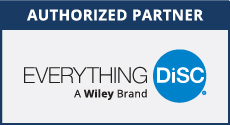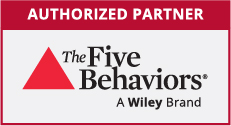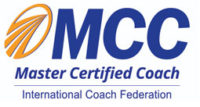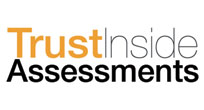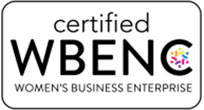People-Whispering Tip:
“The job of managers is not to know everything and decide everything but rather to create an environment in which there are a lot of people who both know and do.” ~ Jeff Pfeffer & Robert Sutton
“The greatest problem with communication is the illusion that it has been accomplished.” ~ George Bernard Shaw
“The buck stops here.”~ Former U.S. President Harry Truman
“Few things can help an individual more than to place responsibility on him, and to let him know that you trust him.” ~ Booker T. Washington
How to Develop Self Directed Leaders at Every Level
One of the most irritating responses to why something wasn’t done that a manager can hear is “that’s not my job.” When an employee says something like that, we need to hold them accountable and push back, right? Well, sort of. If holding people accountable were all that was necessary to positively influence performance, no one would ever be looking for someone or something to blame in the workplace. Think about it. Accountability is rarely an issue when a team is performing well. But when things go sideways, popular wisdom says we are supposed to hold people accountable to get results. Holding people accountable is a bit like motivating others. Everyone is motivated for their own reasons and we really can’t get anyone to do anything they don’t want to do. Sure, we can force people to comply or bully them with fearful tactics, but we cannot capture their hearts and get true buy-in until they make a choice. The bottom line is, people will choose to be accountable or not to the degree they accept personal responsibility. This is just natural behavior. Consider how often you have washed a rental car for example. One of my mentors, Keith Ayers of Integro Learning, makes an important distinction between personal responsibility and accountability that is important to understand. I’ve learned from Keith that personal responsibility is an attitude, belief, or state of mind that you choose while accountability is the outcome or what you do once you have taken personal responsibility. So the question becomes, as a leader, how can I get other people to take personal responsibility? After all, companies today need people who possess an entrepreneurial mindset and have the capability to creatively solve new and ever-increasingly complex problems. Here are 3 keys to help leaders see what kind of environment or culture their leadership behavior is creating as well as what to do about it.
1) Recognize that an Authoritarian Leadership Style Does Not Work
Much has been written these days about the challenges of managing multiple generations in the workplace. While there are differences in perspectives based upon generational differences, this excuse can mask the real issues at hand.
If you want people to believe they are at choice and to take personal responsibility, you cannot create an environment of fear and control. You actually have to give people an opportunity to express their creativity and to behave with some level of autonomy.
If you seek to control self-directed people and try to make them comply, they will either give up and retire in place doing the bare minimum to keep their jobs, or they will leave.
Either scenario hurts the company because these are the people that have the entrepreneurial mindset and the willingness to be creative to solve the problems the company is looking to solve.
This principle holds true in any arena of life whether it be business, education, or parenting. Trying to control people just doesn’t work for the long-term. You run the risk of creating resentment and revengeful behavior which is the exact opposite of the behavior good leaders want.
2) Become a More Self-Aware Leader
The 8 Dimensions of Leadership model mentioned later in this ezine, details 8 styles of leadership that people gravitate to based upon their natural tendencies given their DiSC style.
Learn your strengths and challenges as a leader and do what you can to capitalize on your gifts and to mitigate or soften your limitations. If your tendency is to be more controlling in your approach to influencing people, learn what you can do to work with this pattern.
For example, learning better listening and questioning skills can go a long way towards involving others in the decision-making process. In short, learning a “Coach Approach” to leading and managing, can go a long way towards creating the kind of culture where people are free to bring their best selves to work.
Granted, you may still need to make the final decision, but you will have involved and engaged peoples’ best thinking in the process. Research shows that people are much more willing to give their best even if they disagree with the ultimate decision as long as they have been involved and listened to in the process.
3) Get to Know and Believe in Your People
Research done by Keith Ayers and others at Integro Leadership mentioned earlier, points to the fact that trust is the foundation for a Responsibility-Based Culture. When you trust, believe in, and partner with the people who work for and with you, they can feel it. They know the difference between lip service to these concepts and the “real deal.”
When you get them involved and provide them with opportunities to learn and grow at the right level of responsibility; you can facilitate self-directed behavior and self-reliance.
No one gets up in the morning wanting to do a bad job or to drag themselves through the work day. Most people start a new job with energy and enthusiasm to make a difference and a contribution. Leaders can keep this passion alive by creating an open and honest work environment.
There are likely people working for you right now who want desperately to make a difference. Yet, because of the prevailing control-based environment in which they work, many of them have lost their interest and enthusiasm and are just going through the motions.
Take some time to think about the people on your team. What are their talents, areas for growth and development, strengths and limitations? If you don’t know, begin to ask and get to know your people and what they want. It will pay off in far greater dividends than you know.
To learn more and for assistance in cultivating self-directed employees, leaders, and a Responsibility-Based Culture, please call us at 404-327-6330 or email me at Laura@lauraadavis.com.
2) Final “Five Behaviors of a Cohesive Team” Product Briefings Wiley VP Julie Straw is finishing her country-wide tour of product briefings about “The Five Behaviors of a Cohesive Team.” To register for one of these sessions, please call us at 404-327-6330 or email Laura at Laura@lauraadavis.com. At these breakfast and morning educational sessions (from 8 AM to 10 AM), you will walk away with:
Don’t miss these final special events!
3) The Coaching Clinic Workshop: Coaching Skills for Leaders and Managers The Coaching Clinic is a two-day leadership development program designed to train managers, executive, leaders, and supervisors to use coaching skills in their work relationships. There is also a half-day version available for executives. Developed by Corporate Coach U, this program allows participants to:
4) The 8 Dimensions of Leadership: DiSC Strategies for Becoming a Better Leader by Jeffrey Sugarman, Mark Scullard, and Emma Wilhelm We all approach leadership from a unique starting point – a combination of our own psychological make-up, intelligence, training, and experience. When anyone strives to grow as a leader, they need to stretch their energy in new directions.
For example, a person may be promoted into a leadership
role because of their outgoing nature and positive attitude. While this visionary style may prove inspiring, they might also need to develop their analytical side in order to be more successful at running a business.
The 8 Dimensions of Leadership Model described in the book is based on the DiSC model, a systematic way to understand the forces beneath the surface that drive our individual behavior.
In the last issue of this ezine, I promised to cover some of the lessons we can all learn from each of the 8 leadership styles: Pioneering, Energizing, Affirming, Inclusive, Humble, Deliberate, Resolute, and Commanding.
Let’s begin with the strengths of the Pioneering Style of Leadership and the lessons we can learn from them.
First, let’s review the strengths of the Pioneering or Di Leader. Pioneering leaders might be embodied by people like Richard Branson or Oprah as they tend to be high-energy and inspirational people. They have a way of creating a dynamic environment while helping people to work towards challenging goals.
They tend to:
We all approach leadership from a unique starting point – a combination of our own psychological make-up, intelligence, training, and experience. When anyone strives to grow as a leader, they need to stretch their energy in new directions.
For example, a person may be promoted into a leadership
role because of their outgoing nature and positive attitude. While this visionary style may prove inspiring, they might also need to develop their analytical side in order to be more successful at running a business.
The 8 Dimensions of Leadership Model described in the book is based on the DiSC model, a systematic way to understand the forces beneath the surface that drive our individual behavior.
In the last issue of this ezine, I promised to cover some of the lessons we can all learn from each of the 8 leadership styles: Pioneering, Energizing, Affirming, Inclusive, Humble, Deliberate, Resolute, and Commanding.
Let’s begin with the strengths of the Pioneering Style of Leadership and the lessons we can learn from them.
First, let’s review the strengths of the Pioneering or Di Leader. Pioneering leaders might be embodied by people like Richard Branson or Oprah as they tend to be high-energy and inspirational people. They have a way of creating a dynamic environment while helping people to work towards challenging goals.
They tend to:
DiSC® Assessment Application(s)
1) The Five Behaviors of a Cohesive Team Demo Site is Now Available at http://demo.fivebehaviors.com For supporting information on DiSC, check out http://demo.everythingdisc.com Best-selling author Patrick Lencioni has joined forces with Wiley (formerly Inscape Publishing) to offer this excellent process for building effective teams. Teamwork is the lifeblood of an effective organization. Unlocking the code to getting groups of people to work together in high-performing and joyous ways is the key to a profitable and sustainable corporate culture. The process consists of an individual and team assessment based upon Lencioni’s time-tested, proven model. The accompanying Facilitator Kit walks you through his research-based model to uncover where your team’s strengths and areas for growth and development lie. To take advantage of this well-designed, time-tested method to unleash your team’s potential, call our office at 404-327-6330 or email Laura@lauraadavis.com.2) Final “Five Behaviors of a Cohesive Team” Product Briefings Wiley VP Julie Straw is finishing her country-wide tour of product briefings about “The Five Behaviors of a Cohesive Team.” To register for one of these sessions, please call us at 404-327-6330 or email Laura at Laura@lauraadavis.com. At these breakfast and morning educational sessions (from 8 AM to 10 AM), you will walk away with:
- A high-level overview of The Five Behaviors Model
- Insights from the team assessment that you can apply to your own team and organization
- Real-life examples from the companies who have used The Five Behaviors of a Cohesive Team as their competitive advantage
- Patrick Lencioni’s New York Time best-selling ebook The Five Dysfunctions of a Team
| Fort Lauderdale, FL | October 2, 2014 |
| Orlando, FL | October 3, 2014 |
| Chicago, IL | October 8, 2014 |
| Madison, WI | October 9, 2014 |
| Denver, CO | October 22, 2014 |
| Des Moines, IA | October 23, 2014 |
| St. Louis, MO | October 29, 2014 |
| Overland Park, KS | October 30, 2014 |
| Cincinnati, OH | November 5, 2014 |
| Tysons Corner, VA | November 6, 2014 |
| San Francisco, CA | December 3, 2014 |
| Seattle, WA | December 4, 2014 |
| Toronto, CA | December 9, 2014 |
3) The Coaching Clinic Workshop: Coaching Skills for Leaders and Managers The Coaching Clinic is a two-day leadership development program designed to train managers, executive, leaders, and supervisors to use coaching skills in their work relationships. There is also a half-day version available for executives. Developed by Corporate Coach U, this program allows participants to:
- Discover coaching as a powerful leadership and management development model.
- Experience and practice “state of the art” coaching techniques.
- Understand the structure and process of integrating a “Coach Approach” as a leader
- Apply the learning within the workplace right away.
4) The 8 Dimensions of Leadership: DiSC Strategies for Becoming a Better Leader by Jeffrey Sugarman, Mark Scullard, and Emma Wilhelm
 We all approach leadership from a unique starting point – a combination of our own psychological make-up, intelligence, training, and experience. When anyone strives to grow as a leader, they need to stretch their energy in new directions.
For example, a person may be promoted into a leadership
role because of their outgoing nature and positive attitude. While this visionary style may prove inspiring, they might also need to develop their analytical side in order to be more successful at running a business.
The 8 Dimensions of Leadership Model described in the book is based on the DiSC model, a systematic way to understand the forces beneath the surface that drive our individual behavior.
In the last issue of this ezine, I promised to cover some of the lessons we can all learn from each of the 8 leadership styles: Pioneering, Energizing, Affirming, Inclusive, Humble, Deliberate, Resolute, and Commanding.
Let’s begin with the strengths of the Pioneering Style of Leadership and the lessons we can learn from them.
First, let’s review the strengths of the Pioneering or Di Leader. Pioneering leaders might be embodied by people like Richard Branson or Oprah as they tend to be high-energy and inspirational people. They have a way of creating a dynamic environment while helping people to work towards challenging goals.
They tend to:
We all approach leadership from a unique starting point – a combination of our own psychological make-up, intelligence, training, and experience. When anyone strives to grow as a leader, they need to stretch their energy in new directions.
For example, a person may be promoted into a leadership
role because of their outgoing nature and positive attitude. While this visionary style may prove inspiring, they might also need to develop their analytical side in order to be more successful at running a business.
The 8 Dimensions of Leadership Model described in the book is based on the DiSC model, a systematic way to understand the forces beneath the surface that drive our individual behavior.
In the last issue of this ezine, I promised to cover some of the lessons we can all learn from each of the 8 leadership styles: Pioneering, Energizing, Affirming, Inclusive, Humble, Deliberate, Resolute, and Commanding.
Let’s begin with the strengths of the Pioneering Style of Leadership and the lessons we can learn from them.
First, let’s review the strengths of the Pioneering or Di Leader. Pioneering leaders might be embodied by people like Richard Branson or Oprah as they tend to be high-energy and inspirational people. They have a way of creating a dynamic environment while helping people to work towards challenging goals.
They tend to:
- Be good at initiating change
- Trust their gut instincts or intuition
- Bring people together to achieve their goals
- Be inspiring
- Not be afraid to go into uncharted territory
- Be comfortable taking the lead
- Set stretch goals for themselves and others
- Be willing to take calculated, bold risks
- The Next Big Idea Needs to be Sought Out – Pioneering leaders are good at keeping up with shifting demands and exploring new and bold ways to innovate.
- A Leader’s Job is to Instigate Change – They are not afraid to stretch beyond the boundaries of what has been done before. They are good at spotting trends and making sure that the strategic objectives of the organization reflect where that organization needs to go not just where they are now.
- Overanalysis or Planning Can Be Just as Dangerous as Underanalysis or Lack of Planning – Pioneering leaders know that they must sometimes take chances. They stand out front and make bold choices not always supported by data that might not exist yet.
- Discover Your Primary Leadership Dimension.
- Learn about the Psychological Drivers, Motivations, and “Blind Spots” Typical of Leaders with Your Style.
- Reflect on What Really Matters Most in your Leadership Development Right Now.
- Learn Leadership Lessons in the Areas in Which You’d Like to Grow and Expand.
Transformational Coaching Tip: Channeling Your Inner Pioneer
Whether you are naturally a pioneering style leader or not, here are some tips to help you build upon the strengths of this style. Tips for Becoming More Pioneering- Look beyond your organization’s walls for ideas – benchmark and borrow good ideas from other industries for example.
- Get involved in industry associations, read publications, and generally become a trend-spotter understanding that the world is continually changing and shifting.
- Become friends with industry thought leaders. You don’t have to figure it all out yourself.
- Invite people with different perspectives to share their insights on new directions in which the group could or should go.
- Take some chances, break the glass and push the envelope when necessary.
- Learn to take reasonable leaps of faith. Learn to take decisive and bold action after a reasonable amount of analysis and planning.


